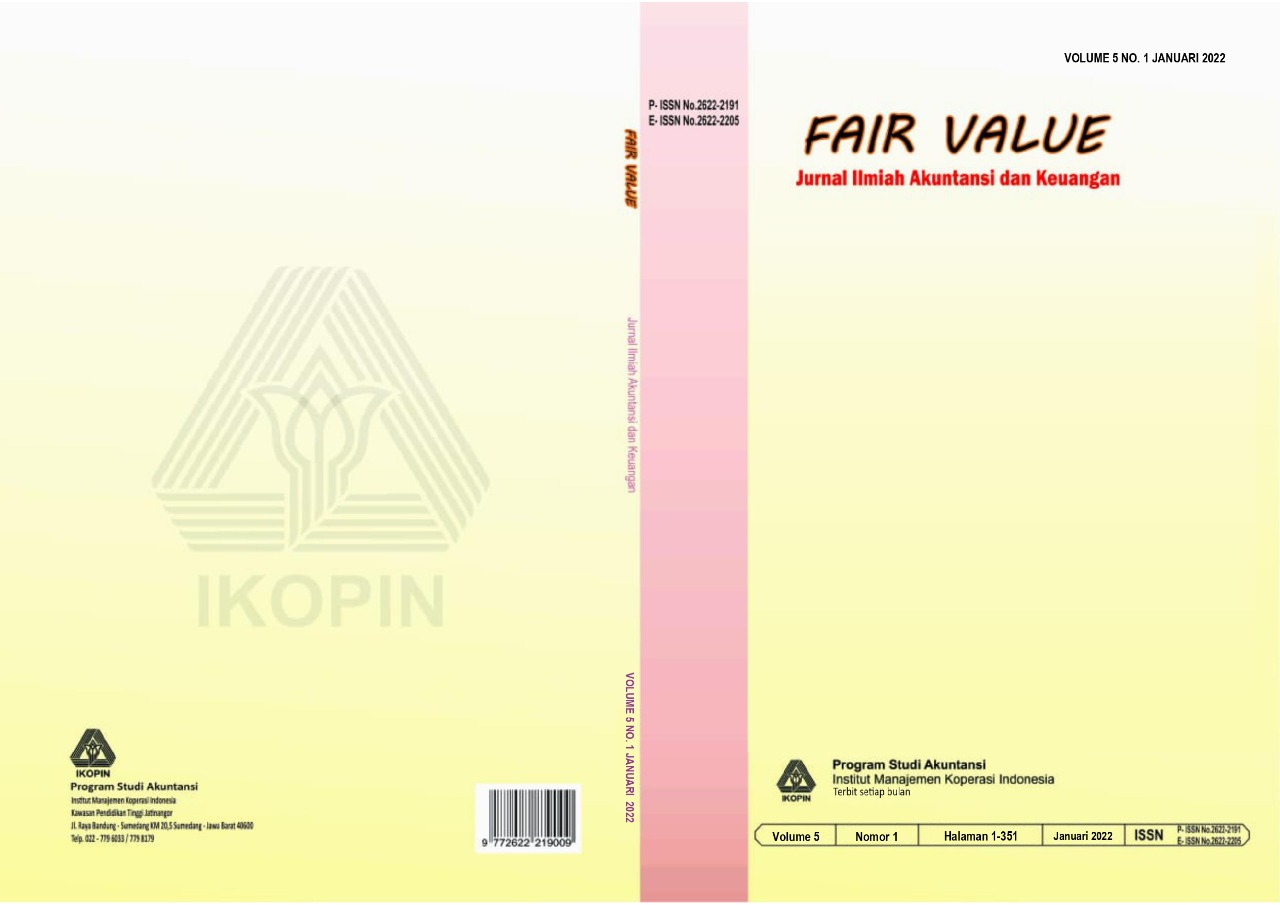The The Influence of the number of teachers, total poverty, number of smokers, and regency/city minimum wages on the HDI in East Java Province from 2018 to 2022
Main Article Content
Abstract
The aim of this research is to find out the influence of the quantity of teaching staff, the number of poor people, the number of smokers, and the Regency/City Minimum Wage on the Human Development Index (HDI) for the East Java Region from 2018 to 2022. The data in this research comes from the Central Agency East Java Regional Statistics for 2018 – 2022. The information in this research uses secondary data. The method used in this research is multiple regression. The results of the t test in this review show that the Human Development Index variable in the East Java Region is not influenced by the number of teachers, while the Human Development Index variable is influenced by the amount of poverty, the number of smokers, and the Regional/City Minimum Wage. The F test results in this review show that the factors of the number of educators, the number of poor people, the number of smokers, and the Regional/City Minimum Wage simultaneously influence the Human Development Index.
Article Details
References
Adelokun, A. S., & Akinola, O. B. (2015). The challenge of teacher quality and human development in Nigeria. US-China Education Review, 5(3), 191-198. https://doi.org/10.17265/2161-6248/2015.03.004
Afif, N. (2019). Pengajaran dan pembelajaran di era digital. IQ (Ilmu Al-qur’an). Jurnal Pendidikan Islam, 2(01), 117–129. https://doi.org/https://doi.org/10.37542/iq.v2i01.28
Badan Statistik Indonesia. (2023). Konsep Perusahaan Industri Pengolahan. Badan Pusat Statistik.
Basuki, A. T., & Prawoto, N. (2017). Analitis Regresi Dalam Penelitian Ekonomi Dan Dilengkapi Aplikasi SPSS Dan Eviews. Rajawali Press.
Cahyadi, W., & Cen, C. C. (2020). The Effect Of Income Distribution, Human Development Index, And Economic Growth On Poverty. International Journal Economic And Business Applied, 1(2), 187–194. https://doi.org/http://ijeba.makarioz.org
Faizin, M. (2021). Pengaruh Upah Minimum, Kemiskinan dan Pengangguran pada IPM di Kabupaten/Kota Provinsi Jawa Timur. Jurnal Samudra Ekonomi Dan Bisnis, 12(2), 214–227. https://doi.org/https://doi.org/10.33059/jseb.v12i2.3027
Ghozali, I. (2016). Fraud diamond: Detection analysis on the fraudulent financial reporting. Risk Governance & Control: Financial Markets & Institutions, 6(4), 116–123. https://doi.org/www.virtusinterpress.org
Handalani, R. T. (2018). Determinant of human development index in Southeast Asia. Jurnal Kebijakan Pembangunan Daerah, 2(2), 118–137.
Herinoto, H., & Zulfanetti, Z. (2021). Faktor penentu indeks pembangunan manusia dan hubungannya dengan belanja infrastruktur serta pertumbuhan ekonomi Kabupaten/Kota Provinsi Jambi. Jurnal Paradigma Ekonomika, 16(2), 343–358. https://doi.org/https://doi.org/10.22437/jpe.v16i2.12657
Hermalinda, S. (2019). Dampak Rokok Terhadap Kemiskinan Keluarga (Studi Gampong Keude Kiha, E. K., SERAN, S., & LAU, H. T. (2021). Pengaruh jumlah penduduk, pengangguran, dan kemiskinan terhadap indeks pembangunan manusia (ipm) di kabupaten belu [UNIVERSITAS ISLAM NEGERI AR-RANIRY]. https://repository.ar-raniry.ac.id/id/eprint/13124
Napitupulu, D., Yacub, R., & Putra, A. H. P. K. (2021). Factor influencing of telehealth acceptance during COVID-19 outbreak: extending UTAUT model. International Journal of Intelligent Engineering and Systems, 14(3), 267–281. https://doi.org/10.22266/ijies2021.063
Ningrum, J. W., Khairunnisa, A. H., & Huda, N. (2020). Pengaruh kemiskinan, tingkat pengangguran, pertumbuhan ekonomi dan pengeluaran pemerintah terhadap indeks pembangunan manusia (IPM) di Indonesia tahun 2014-2018 dalam perspektif Islam. Jurnal Ilmiah Ekonomi Islam, 6(2), 212–222. https://doi.org/http://dx.doi.org/10.29040/jiei.v6i2.1034
Rimawan, M., & Aryani, F. (2019). Pengaruh alokasi dana desa terhadap pertumbuhan ekonomi, indeks pembangunan manusia serta kemiskinan di Kabupaten Bima. Jurnal Ilmiah Akuntansi Dan Humanika, 9(3), 287–295. https://doi.org/https://doi.org/10.23887/jiah.v9i3.22539
Sanggelorang, S., Rumate, V., & Siwu, H. (2015). Pengaruh pengeluaran pemerintah di sektor pendidikan dan kesehatan terhadap Indeks Pembangunan Manusia di Sulawesi Utara. Jurnal Berkala Ilmiah Efisiensi, 15(3). https://doi.org/https://ejournal.unsrat.ac.id/index.php/jbie/article/view/8686
Sarwono, J. (2016). Prosedur-prosedur analisis populer aplikasi riset skripsi dan tesis dengan Eviews. Gaya Media.
Si’lang, I. L. S., Hasid, Z., & Priyagus, P. (2019). Analisis faktor-faktor yang berpengaruh terhadap indeks pembangunan manusia. Jurnal Manajemen. Jurnal Manajemen, 11(2), 159–169. https://doi.org/https://doi.org/10.30872/jmmn.v11i2.5953
Siddique, H. M. A., Nazir, S., Mohey-Ud-Din, G., & Kiani, A. K. (2022). The impact of poverty on human health: a panel data analysis. Bulletin of Business and Economics (BBE), 11(1), 113–120. https://doi.org/https://doi.org/10.5281/zenodo.6412565
Tri Basuki, A. (2016). Pengantar Ekonometrika. Danisa Media.
Trisno, T. U., & Oktarina, Y. (2022). Pengaruh kemiskinan terhadap indeks pembangunan manusia (ipm) di provinsi sumatera selatan tahun 2016-2020. Jurnal Ilmiah Akuntansi Dan Keuangan, 4(8), 3560–3566. https://doi.org/https://journal.ikopin.ac.id/index.php/fairvalue
UNDP. (2019). Human Development Index and its components. United Nations Development Programme.
West, R. (2017). Tobacco smoking: Health impact, prevalence, correlates and interventions. Psychology & Health, 32(8), 1018–1036. https://doi.org/https://doi.org/10.1080/08870446.2017.1325890

